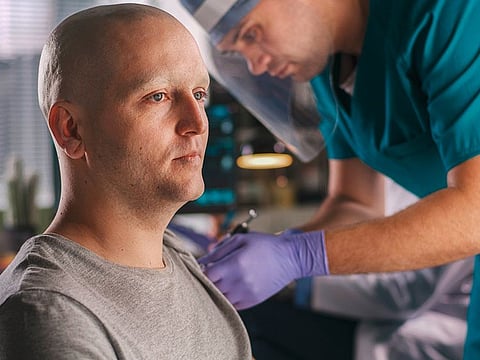Successes and challenges of cancer treatment over the last decades
In the past few decades, the overall cancer death rate has continued to decline

Since 1971, the cancer death rate is down more than 25 per cent. Between 1975 and 2016, the five-year survival rate increased 36 per cent.
The arsenal of anticancer therapies has expanded more than tenfold. Mammograms, colonoscopies and other screenings are finding common cancers in early stages more often, when survival odds are as high as 99 per cent. Researchers across the world have made major advances in learning more complex details about how to prevent, diagnose, treat, and survive cancer.
At the forefront of emerging cancer research is the success of the growing role of precision medicine, immunotherapy and targeted therapy, the influence that reducing health disparities can have on cancer outcomes, and the development and use of liquid biopsies and machine learning, which is allowing scientists to make sense of “big data.”
The arsenal of anticancer therapies has expanded more than tenfold. Mammograms, colonoscopies and other screenings are finding common cancers in early stages more often, when survival odds are as high as 99 per cent.

How Treating Cancer Became More Precise
Precision medicine is helping move cancer treatment from one-size-fits-all to an approach where doctors can choose treatments that are most likely to successfully treat a person’s cancer based on the detailed genetic information of that person’s specific cancer. With advances leading to faster and less expensive gene sequencing, precision medicine is starting to be used more often to treat patients, most notably in the treatment of lung cancer.
Over 50 years, we’ve discovered cancer is not one but many, many hundreds of diseases.
Better understanding of cancer and how cancer cells’ behaviour helped to understand
Cancers can spread with help from their neighbours.Until recently, scientists haven’t known how much help cancer cells get from other types of cells and substances in their microenvironment. The microenvironment is the immediate area around the tumour. Over the last 10 years, better understanding of features of cancer cells that must be present for metastasis to happen. They also learned more about how cancer cells:
* Send and receive signals that change the microenvironment to “clear a path” to the new site of spread.
* Change to avoid attack from the immune system
* Are able to create new tumour.
Identifying each “helper” in the microenvironment could lead to new targets for novel treatments that can help shut down the cancer’s growth and ability to spread.
Better and precise investigations to evaluate tumour extent and presence of any residual disease, like PET CT with different materials for different types of tumours.
Prevention and detection
Finding cancer before it starts is a powerful prevention strategy. An estimated 20 to 40 per cent of cancer cases and half of all cancer deaths could be eliminated with familiar steps like not smoking, exercising, avoiding too much alcohol and maintaining a healthy body weight.
Since the start of the war on cancer, smoking rates are down 63 percent, a major contribution to the overall drop in cancer deaths.
But the epidemic of obesity, which increases risk for 13 types of cancer, according to the National Cancer Institute, could soon overtake smoking as a major cancer trigger. Currently, obesity is responsible for at least 40 perc ent of US cancers – and two-thirds of cancers in people ages 50 to 74 — and rates are rising, even as the number of smoking-related cancers declines.
Meanwhile, a cancer-avoidance strategy called “secondary prevention” — where cancer is found at its earliest, most treatable stages and eliminated — is also getting a boost on another front. Right now, for most people, secondary prevention means getting recommended mammograms, colonoscopies or other colorectal cancer screenings, lung scans for smokers, Pap smears for women and prostate cancer checks for some men. In the future, it could start with a single blood test that looks for floating traces of protein and DNA from a wide range of cancers. Detection at the earliest stages makes halting the cancer’s progress far easier.
The best way to decrease cancer’s lethality is by not getting it at all.
Palliative Care
More attention and understanding of supporting and palliative care early in cancer treatment.
With cancer, there are two modes of care—treatment directed at the disease and treatment, known as palliative care, which is focused on the person with the disease. This type of care helps patients and caregivers manage symptoms from the cancer and side effects from the treatment.
Clinical trials have shown that when people with cancer receive both types of treatment at the same time, their symptoms are controlled better, and they have less anxiety and depression, improved family satisfaction and quality of life, improved use of healthcare resources, and longer survival. Palliative care is one of the fastest growing areas of health care in the US, and it’s changing as new treatments emerge, especially for cancer patients.
Patients with metastatic non-small-cell lung cancer who received palliative care early in their treatment had big improvements in their quality of life and mood.
Plenty has changed, but plenty more needs to.
Sign up for the Daily Briefing
Get the latest news and updates straight to your inbox



